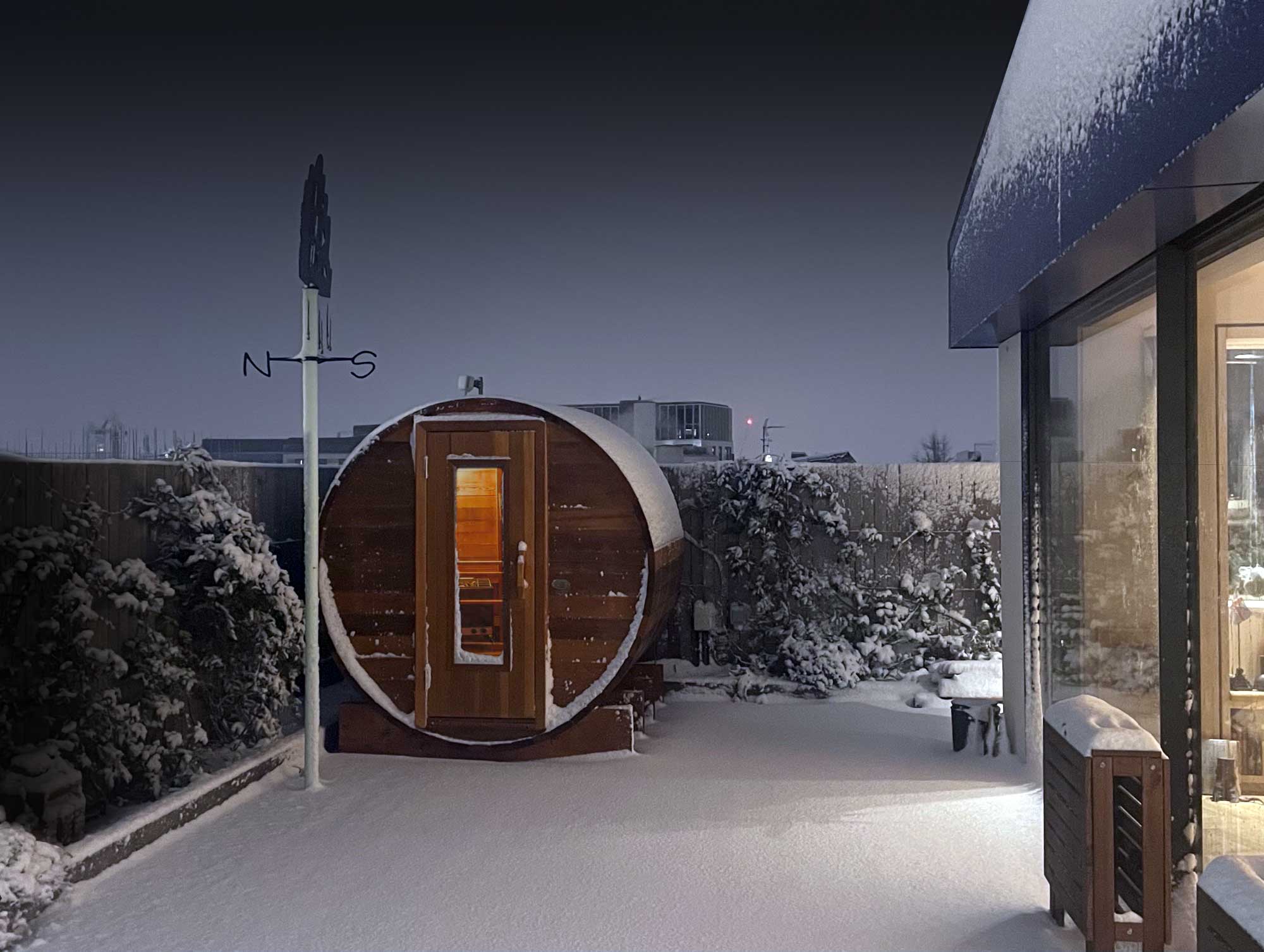Cedar Wood Sauna FAQs
There are several benefits to using a Cedar Wood Sauna, including relaxation, stress relief, improved circulation, detoxification, and potential pain relief.
Several sauna manufacturers use lower-cost woods and advertise them as “hypoallergenic wood” to add some value to an otherwise low-priced wood. In contrast, Cedar wood is a top-quality wood that doesn’t cause allergies, and it is the preferred choice for many quality sauna manufacturers. At our company, we use premium grade 1 1/2″ thick Western Red Cedar.
The ideal temperature for a sauna can vary depending on personal preference, but typically falls within the range of 150°F to 190°F (65°C to 88°C). However, it’s important to listen to your body and not exceed your own limits. Beginners may want to start with a lower temperature and gradually work their way up as they become more accustomed to the heat. It’s also important to stay hydrated and take breaks as needed.
Saunas are synonymous with Finland because they have been an integral part of Finnish culture for centuries. In Finland, saunas are not just a luxury or a way to relax, but are an important part of daily life and social gatherings. They are seen as a place of physical and mental purification, where one can escape the stresses of daily life and connect with family and friends.
The Finnish sauna tradition dates back over 2,000 years, with evidence of sauna use dating as far back as the Stone Age. Saunas were originally used for hygiene purposes and were seen as a way to ward off illness and evil spirits. Over time, saunas became an important part of Finnish culture and tradition, with almost every household having its own sauna.
Today, saunas remain an important part of Finnish culture and identity. They are found in homes, hotels, and public places throughout the country, and the Finnish Sauna Society works to promote the traditional Finnish sauna experience and preserve the sauna culture for future generations.
It is generally not recommended to stain the inside of a cedar wood sauna. Cedar wood contains natural oils that provide a protective layer and resistance to decay and insects, and staining can interfere with these natural properties. Staining the wood can also release volatile organic compounds (VOCs) when exposed to the heat, which can be harmful to your health when inhaled.
Also it’s important to note that the natural scent of cedar wood is an important aspect of the sauna experience for many people, and applying any kind of product to the wood can diminish or alter this scent.
To clean your sauna, you will need a soft-bristled brush, a bucket of warm water, and a mild soap or sauna cleaner. Here are the steps to follow:
- Allow the sauna to cool down to room temperature before cleaning.
- Using the soft-bristled brush, gently scrub the walls, benches, and floor of the sauna to remove any dirt or debris.
- Once you have removed the loose dirt and debris, use a damp cloth or sponge to wipe down the surfaces with warm water and a mild soap or sauna cleaner. Avoid using harsh chemicals or abrasives, as these can damage the wood or finish.
- Rinse the surfaces with clean water to remove any soap residue.
- Use a dry cloth or towel to wipe down the surfaces and remove any excess water.
- Allow the sauna to air out and dry completely before using it again.
It’s a good idea to clean your sauna on a regular basis to prevent the buildup of dirt and bacteria. The frequency of cleaning will depend on how often you use the sauna, but a weekly or bi-weekly cleaning is typically recommended.
The IKI Pillar 6 kW is fused 3x10A. The heater is connected to the electrical network with a H07RN‐F rubber cable or an equivalent. The use of PVC‐insulated cable as a connecting cable is prohibited due to thermal embrittlement. The electric installation may only be administered by a qualified electrician adhering to current regulations. The maximum distance of the junction box from the floor is 400 mm, measured from the upper corner of the box.

